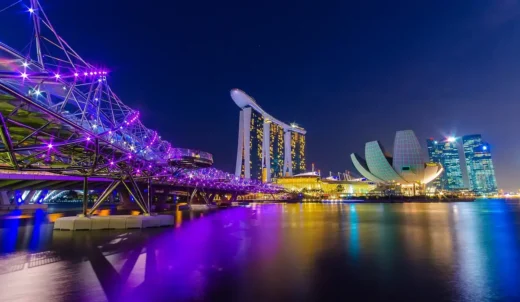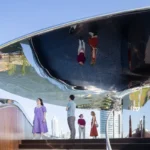Architectural design elements shaping casino venues, Modern gambling venue design, Entertainment buildings
Architectural Design Elements Shaping Major Casino Venues
28 May 2025
Key Architectural Design Elements That Shape the Success of Major Casino Venues—From Layouts to Lighting and Their Impact on Player Behavior
Casino architecture isn’t just about grandeur—it’s about strategy. Poor design can cost millions in lost player engagement. A 2023 study by the University of Nevada found that casinos with optimized floor layouts increased revenue by 13%. Elements like controlled lighting, ceiling height, carpet patterns and spatial flow directly influence how long guests stay, how much they spend and how comfortable they feel. Whether it’s the labyrinth-style design of major land-based casinos or the clean user interface of online platforms, design plays a central role in user retention and emotional impact.
Designing for Flow and Focus
Casino layouts are never accidental. One of the most effective principles is the “maze” or “labyrinth” layout. Unlike open-floor retail models, casinos benefit from guiding players through winding paths that increase exposure to more games. This approach increases the chances of impulse plays and reduces exit points. Major venues often use curved pathways, hidden signage and strategic game placement to maintain constant engagement.
Dead-end zones are avoided. Every area must lead somewhere useful. Slot machines are often placed at high-traffic intersections, while table games are positioned more centrally to draw attention and energy. Even spacing matters—tight enough to feel lively, but never claustrophobic.
Online casinos take similar principles into account. Menus are designed to be sticky but unobtrusive. The flow from registration to first deposit is kept smooth and categories like bonuses, e.g., the appealing Ontario casino bonus are well-labeled to minimize cognitive load. A cluttered UI results in drop-offs; a focused, intuitive design leads to better player retention.
Lighting and Atmosphere: Emotional Control Through Design
Lighting is one of the most powerful tools in casino design. Soft, warm tones are used to relax players and promote longer stays. Bright overhead lights are avoided in favor of ambient lighting that mimics a twilight environment—perfect for blurring the sense of time. Slot machine areas are typically brighter, signaling excitement and action. In contrast, table games are often lit to feel more exclusive and private.
Color temperature isn’t random either. Cooler tones are rarely used because they increase alertness and reduce relaxation. Instead, warm whites and yellows dominate. Paired with acoustic management, scent branding and temperature control, lighting contributes to a space that feels welcoming and immersive.
Even online casinos now use background animation and color gradients to simulate atmosphere. Many platforms opt for darker themes with gold accents to create a feeling of luxury and exclusivity. Just like in physical venues, the goal is to keep users comfortable, focused and emotionally engaged.
Ceiling Height and Spatial Psychology
Ceiling height plays a crucial role in how players perceive and interact with a casino space. Low ceilings create a feeling of intimacy and focus. High ceilings, while visually impressive, can dilute the emotional energy of a gaming floor. Major casinos often strike a balance: lower ceilings in gaming areas to encourage engagement and higher ceilings in lounges and food courts to promote relaxation.
A 2022 report from the Global Gaming Expo highlighted that casinos with gaming floors under 12 feet in height had a 9% higher average dwell time compared to those with taller structures. The psychological explanation is that constrained spaces enhance task focus—a key goal in casino gaming zones.
Online platforms replicate this concept by using full-screen modes, minimal scrolls and content segmentation to create “focus zones” within their interfaces. Users are less distracted and dwell times improve as a result.
Wayfinding, Signage and Subtle Guidance
Good casino design minimizes confusion. Clear wayfinding helps players move seamlessly between sections, while keeping them engaged along the way. Signage should be visible but not overwhelming. Fonts are large but elegant. Colors contrast well but don’t disrupt the mood.
Restrooms, exits and dining areas are placed far from entrances to discourage short visits. Instead, the journey to these amenities is intentionally designed to pass through active gaming areas, increasing opportunities for spontaneous play.
In the digital space, this translates into predictive navigation. Online casinos use AI-based content recommendations, hover effects and smart filters to guide users toward high-engagement games. Breadcrumb trails, sticky headers and quick-access buttons all contribute to a seamless journey.
Material Choices and Acoustics
Materials used in flooring, walls and furnishings play both aesthetic and functional roles. Carpet is common in gaming areas because it absorbs sound and encourages slower walking speeds—both desirable traits. Tiles are often reserved for bars and entrances, where movement and turnover are faster.
Fabrics are chosen for durability and comfort, while wood finishes add warmth and class. Soundproofing is built into ceilings and walls to maintain a consistent noise level—buzzing enough to signal activity, but never loud enough to become chaotic. The hum of slot machines and chips clinking is carefully engineered rather than accidental.
In online environments, similar strategies are applied through sound design. Background music, reel sounds and win chimes are all tested for psychological impact. Too loud or too frequent and it becomes annoying. Just right and it enhances immersion.
Architectural design is the silent salesperson of every major casino venue. From lighting and layout to ceiling height and acoustics, every choice is meant to control user experience and maximize value. These are not cosmetic decisions—they are revenue-driving strategies rooted in psychology and data. As online casinos grow, their design principles are shaping other digital platforms. The goal stays the same: build spaces so engaging players don’t want to leave.
Comments on this guide to Architectural design elements shaping casino venues article are welcome.
Casino Buildings
Casino Building Designs
5 most beautiful casino buildings in world
Casino Architecture Design Guide
Buildings
Contemporary Property Articles – recent architectural selection from e-architect below:
London Architecture Designs – chronological list
Comments / photos for the Architectural design elements shaping casino venues – modern gambling venue design – From Glamour to Gaming page welcome.








